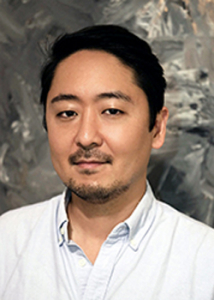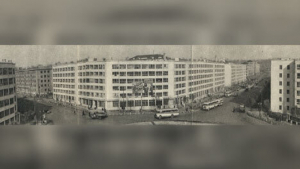
The history of architecture and urbanization of North Korea is the focus of a University of Hawaiʻi at Mānoa Department of History professor’s project that just received a major boost from the U.S. Department of Education. Associate Professor Cheehyung Harrison Kim earned a Fulbright-Hays Faculty Research Abroad Fellowship that will cover travel, housing and other research-related expenses.

The Fulbright-Hays program is designed to contribute to the development of modern foreign language and area studies in the U.S. by providing opportunities for scholars to conduct research abroad. Kim is among the first recipients of the Faculty Research Abroad Fellowship awards since 2011, as the program had been on a hiatus for more than decade.
“I am very thrilled. My mind is overflowing with ideas and plans, and this grant will help me finish my second book,” Kim said. “At the University of Hawaiʻi, we are foremost about conducting research and producing knowledge that are useful for our community and our world. I’m honored and grateful that I can use this grant to pursue this.”
In summer 2023, Kim will collect North Korean documents in South Korea where there are a number of large North Korean archives, as travel to North Korea for research is heavily restricted by the U.S. government. His research will focus on the architectural history of North Korea from after the Korean War in the early 1950s to the 1980s.
Project objectives
- Study the process, policies, vision and people of North Korea involved in its urbanization after the Korean War, when the country was largely destroyed;
- Examine the international cooperation that took place in North Korea as the country was a global partner in the socialist realm with Eastern Europe, Southeast Asia, Africa, Mongolia, China and the Soviet Union, as well as the influence of international partnerships on architecture;
- Place North Korean history within the same modern world history that we lived through, the country developing and responding to the same global historical forces.

“If you visit North Korea today, you’ll see that, yes, many buildings are old and falling apart, but the architectural landscape is incredibly diverse and modern. This all happened much earlier than South Korea,” Kim said. “South Korea today has a shiny urban landscape, but North Korea urbanized much earlier with as much diversity of architectural styles.”
Kim’s first book, Heroes and Toilers: Work as Life in North Korea, 1953-1961, which was published in 2018 by Columbia University Press details life and labor in North Korea after the Korean War.
- Related UH News story: Insight into North Korea’s past could forge future relations with U.S., December 6, 2018
Fulbright-Hays dissertation award
UH Mānoa Department of History PhD student Hosub Hwang, who is also Kim’s advisee, is a recipient of the Fulbright-Hays Doctoral Dissertation Research Abroad Fellowship. Hwang’s research is on South Korea’s history of social movements during authoritarian periods in the 1970s and 1980s. In particular, he focuses on how activists and protesters utilized city spaces to carry out their campaigns for democracy.
Key re-organization to bridge research, academics
The Fulbright-Hays fellowship program is managed at UH Mānoa, jointly by the Office of the Vice Provost for Research and Scholarship and the Office of the Vice Provost for Academic Excellence. These offices were developed as part of UH Mānoa’s administrative reorganization effective July 2021. The joint management of this research fellowship from the Department of Education demonstrates how the reorganized offices can work together to bridge across academic and research foci to best serve UH faculty and students.
“Structuring this under both vice provost offices provides the best support for our faculty, students and postdoctoral researchers,” UH Mānoa Interim Vice Provost for Research and Scholarship Christopher Sabine said. “Together, we can help improve their odds of getting funded through this very prestigious program.”
Applicants for this program work with the Office of the Vice Provost for Research and Scholarship to develop a proposal that undergoes institutional review. The selected proposals are then submitted to the Fulbright-Hays program for evaluation.
—By Marc Arakaki

